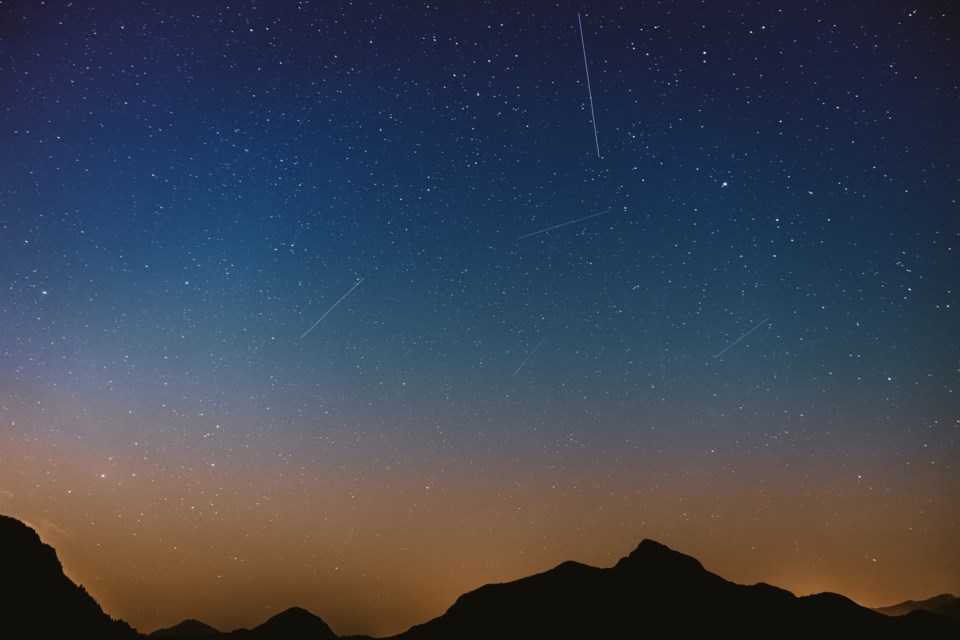The late cosmologist and author Stephen Hawking famously said, "remember to look up at the stars and now down at your feet."
This is sage advice for anyone lucky enough to be at Porteau Cove when night falls.
Squamish photographer Robert Davidson Keir turned his camera lens skyward and captured these stunning images.
H.R. MacMillan Space Centre astronomer Marley Leacock said there's much to see from Porteau.
"The circumpolar constellations and asterisms are visible — Ursa Major and Minor with their Big and Little Dippers, but I am particularly excited for the Summer Triangle asterism," she said.
The Summer Triangle is an asterism — a pattern of stars that is not a constellation — that consists of three stars from three different constellations, Leacock explained. "Vega, from the constellation Lyra, Deneb from the constellation Cygnus, and Altair from the constellation Aquila. The three stars form a large triangle in the sky.
The stars themselves are quite bright. Vega is one of the brightest stars in the sky during this time. Another is Arcturus, which can be found by following the path of the handle of the Big Dipper in an arc," she said.
Before sunrise to the east, several planets will be rising — Saturn, followed by Mars, Jupiter, and finally Venus.
This happens around 4 a.m., she said and will continue through the summer with the planets rising earlier as time goes on.
The streaks seen in the first picture could be from meteorites, but more likely, they are from satellites, she said.
"Satellites appear as very thin dim paths of light, with no other markings. The brightness will be the same from one endpoint to the other. Meteorites will become brighter and then dimmer before tapering out into nothing," she said.
Leacock said something for curious stargazers to watch for is the upcoming lunar eclipse on May 15.
"The moon will rise in the southeastern sky just after 9 p.m. When it rises, it will be a red colour due to it being almost completely covered by the Earth's shadow. It will get easier to see as it gets higher in the sky and moves out from the shadow. The eclipse will end at about 11 p.m."




